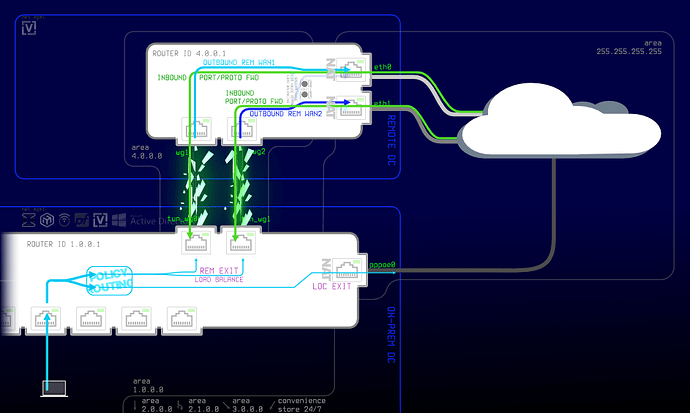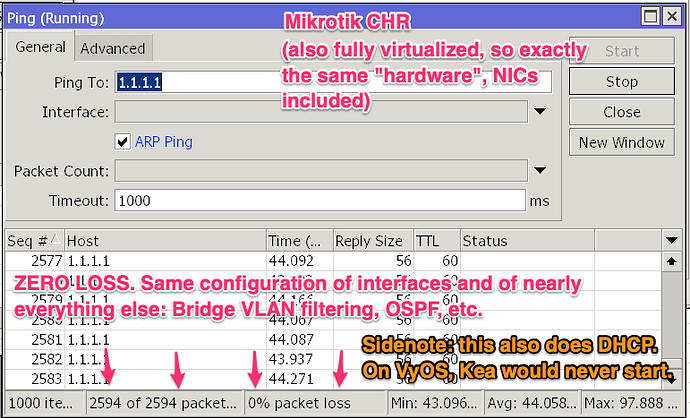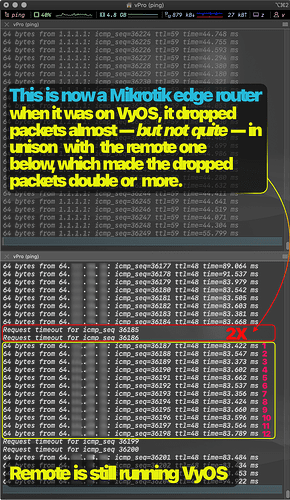I’m trying to convert my pfSense edge/main router/firewall to VyOS. Back on pfSense, the main router connected to a remote gateway for its fixed public IPv4 addresses. It used two tunnels to place-shift the addresses, and since these doubled as extra WANs, it also load-balanced the tunnels, this made up for the massive difference in speed between the links on each side.
For outbound traffic, load balancing was done locally as I mentioned. On the remote side, there wasn’t much to do other than assigning it’s own gateway to each tunneled interface.
For inbound traffic, most incoming traffic was natted full cone to the reverse proxy from the remote side all the way to the local intranet, without NAT between the sites. Since it’s more than one link between the sites, that makes it an ECMP route, thus a routing protocol is needed.
But there’s a note in the docs that says: “WAN Load Balacing should not be used when dynamic routing protocol is used/needed. This feature creates customized routing tables and firewall rules, that makes it incompatible to use with routing protocols.”.
I replaced both pfSense routers with VyOS, established the links, fine-tuned MTUs, established OSPF neighbor adjacencies, but only then it occurred to me to read the load balancing documentation, so I got kinda stuck (and currently am offline). I assume this is doable since I’ve done it for a while, if it is, could you guide a me little please? Just the big picture, a link or two. If there’s anything to research I’m happy to do my own homework; I just need a little push in the right direction.
If it’s not though, could you confirm as well? I can always double-NAT, I rather not to but it seems like VyOS can do full cone so I think it will be alright.
Almost forgot, the diagram above it’s a simplified illlustration inter-site, and intranet-Internet traffic flows, I was doing that just for fun, totally unrelated, but it worked out well for this too. It’s too colorful/distracting for documentation so it’s the only chance I’d ever get to use it too.
Thanks.


